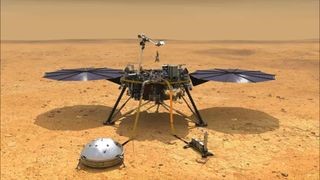Free Courses Sale ends Soon, Get It Now


Free Courses Sale ends Soon, Get It Now



Disclaimer: Copyright infringement not intended.
Context
Details
Background
Recent Findings
Scientific Significance
About
Overview:
Characteristics:
Detection and Study:
Scientific Significance:
Comparison with Earthquakes:
Conclusion
The recent findings underscore the need for continued research into Martian geology and seismic activity, paving the way for a deeper understanding of the Red Planet's potential for sustaining human life and future exploration endeavors. Studying Marsquakes is instrumental in deepening our understanding of the Red Planet's geology, history, and potential habitability, contributing to future human exploration and possible colonization efforts on Mars.
|
PRACTICE QUESTION Q. Discuss the similarities and differences between Marsquakes and Earthquakes. How do the recent discoveries of Marsquakes challenge our understanding of the geological processes on Mars? (250 Words) |
© 2024 iasgyan. All right reserved